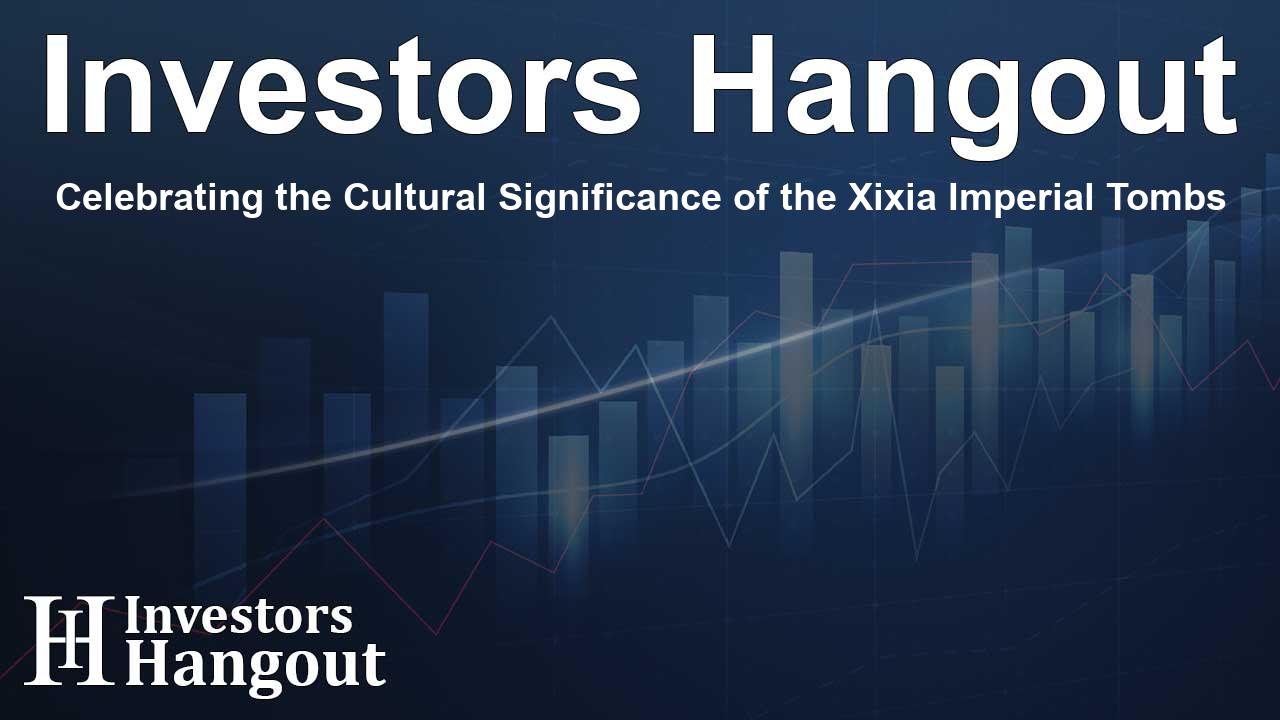Celebrating the Cultural Significance of the Xixia Imperial Tombs

Significance of the Xixia Imperial Tombs in Cultural Heritage
The Xixia Imperial Tombs recently gained World Heritage Site status, a remarkable recognition highlighting their rich history and cultural importance. This event marks a significant milestone for heritage preservation, as it emphasizes the expanded list of China’s world heritage sites, now totaling sixty. With its official acknowledgment, the tombs symbolize not just a historical legacy but also a commitment to safeguarding cultural heritages for future generations.
The Moment of Recognition
During the UNESCO World Heritage Committee session, excitement enveloped the chamber as the chairman proclaimed the Xixia Imperial Tombs' esteemed status. The applause was overwhelming, with delegates from various nations celebrating a common appreciation for cultural heritage. The monumental moment was captured by a celebratory display from the Chinese delegation, showcasing their pride in this significant achievement.
Applauding Cultural Achievements
Following the announcement, numerous officials from UNESCO and associated cultural bodies expressed their congratulations. They acknowledged China’s enduring efforts to protect and promote its extensive cultural heritage, reflecting a deep respect for history and tradition. Teresa Patricio, the President of ICOMOS, emphasized the architectural splendor and historical significance of the Xixia tombs, pointing out that their recognition celebrates not only the site but also China’s ongoing dedication to heritage conservation.
Understanding the Xixia Dynasty
To appreciate the significance of the Xixia Imperial Tombs, one must delve into the history of the Xixia Dynasty, which thrived in Northwest China for nearly two centuries. Founded by the Tangut people in the 11th century, the dynasty established its capital in Yinchuan. The Xixia territory expanded significantly, serving as a prominent hub on the ancient Silk Road.
Legacy of the Tangut People
The empire flourished under ten imperial reigns before succumbing to the Mongol invasions led by Genghis Khan in the 13th century. This historical background provides context for the tombs' significance, which reflect a blend of cultural traditions and accomplishments from a time of great diversity. As various ethnic groups coexisted, their cultural practices enriched Xixia’s identity, showcasing a vibrant tapestry of experiences and beliefs.
UNESCO's Criteria for Recognition
UNESCO's criteria for the recognition of the Xixia Imperial Tombs focused on their role as a testimony to profound cultural interchange and their evidence of a lost civilization. The diversity of communities during the Xixia Dynasty—comprising Tangut, Han, Uygur, and Tibetan cultures—underscores the site's unique heritage. This cultural interchange played a pivotal role in shaping the rich historical landscape of the region.
The Artifacts Tell a Story
Archaeological excavations, which began in the 1970s, have unearthed significant findings, including royal tombs and thousands of artifacts that illuminate the engineering and artistic achievements of the Tangut dynasty. Notable discoveries include kalavinka figurines, reflecting influences from Indian mythology and artistic styles that proliferated during the dynasty's reign.
A New Era for Cultural Preservation
Experts believe that this UNESCO recognition marks the beginning of renewed interest and exploration into the Xixia Imperial Tombs. According to heritage experts, this recognition can significantly boost public awareness and stimulate further research and conservation efforts. The anticipation of increased visitor numbers reveals a bright future for this historical site.
Engaging the Community and Future Generations
As tourism begins to flourish, local organizations are taking proactive steps to engage the community. Schools are increasingly organizing educational trips to the Xixia Imperial Tombs, providing students with firsthand experiences with their cultural history. Such initiatives will undoubtedly foster a deeper understanding and appreciation for the rich tapestry of Xixia heritage.
Conclusion: A Heritage Worth Celebrating
The Xixia Imperial Tombs' recognition as a World Heritage Site serves as a timely reminder of the importance of cultural heritage in a rapidly changing world. As exploration and scholarship regarding this remarkable dynasty enhance, the impact of their legacy will continue to resonate through generations. It is an invitation for all to acknowledge and celebrate the contributions of the Xixia Dynasty to the broader narrative of human civilization.
Frequently Asked Questions
What makes the Xixia Imperial Tombs significant?
The Xixia Imperial Tombs are significant for their historical value, showcasing the rich cultural exchange and achievements of the Xixia Dynasty that once thrived in Northwest China.
Who acknowledged the Xixia Imperial Tombs as a World Heritage Site?
The UNESCO World Heritage Committee officially acknowledged the Xixia Imperial Tombs as a World Heritage Site, recognizing their cultural and historical importance.
What artifacts have been uncovered from the Xixia tombs?
Excavations from the tombs have uncovered royal tombs, artifacts such as kalavinka figurines, and structures that reflect the engineering achievements of the Tangut dynasty.
How does UNESCO recognition impact future research?
UNESCO recognition is expected to enhance research opportunities and increase public awareness about the Xixia Imperial Tombs, leading to greater appreciation and conservation efforts.
Why should visitors explore the Xixia Imperial Tombs?
Visiting the Xixia Imperial Tombs allows individuals to connect with an important part of world history, experience cultural richness, and appreciate the architectural and artistic achievements of the Tangut dynasty.
About The Author
Contact Henry Turner privately here. Or send an email with ATTN: Henry Turner as the subject to contact@investorshangout.com.
About Investors Hangout
Investors Hangout is a leading online stock forum for financial discussion and learning, offering a wide range of free tools and resources. It draws in traders of all levels, who exchange market knowledge, investigate trading tactics, and keep an eye on industry developments in real time. Featuring financial articles, stock message boards, quotes, charts, company profiles, and live news updates. Through cooperative learning and a wealth of informational resources, it helps users from novices creating their first portfolios to experts honing their techniques. Join Investors Hangout today: https://investorshangout.com/
The content of this article is based on factual, publicly available information and does not represent legal, financial, or investment advice. Investors Hangout does not offer financial advice, and the author is not a licensed financial advisor. Consult a qualified advisor before making any financial or investment decisions based on this article. This article should not be considered advice to purchase, sell, or hold any securities or other investments. If any of the material provided here is inaccurate, please contact us for corrections.
